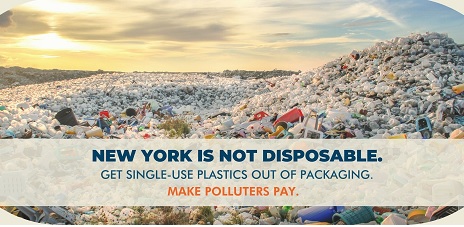Investigation Confirms PA Fracking Well Blowout Was Easily Preventable, Potentially Catastrophic
July 16, 2010Natural Gas "Fracking" Threatens National Water Supply, Human Health
July 17, 2010By Food & Water Watch, Wednesday, July 14, 2010
Washington, D.C.-In the wake of April’s calamitous oil spill in the Gulf of Mexico, pundits are pointing to natural gas as the resource to save the U.S. from its energy woes. But a new report released today by the national consumer advocacy group Food & Water Watch suggests that relying on this polluting technology may simply set the nation up for further ecological disasters.
Not so Fast, Natural Gas: Why Accelerating Risky Drilling Threatens America’s Water outlines the ways in which the rapid expansion of the oil and gas industry’s use of hydraulic fracturing (also known as “fracking”) in recent years compromises essential drinking water resources, human health and the environment.
The process of extracting gas from rock formations, fracking relies on a chemical cocktail that can be toxic if leaked into groundwater supplies. The industry is not required by federal law to report the type or quantity of chemicals it uses, and only ten states require disclosure of this information. Analysis of what industry information is available reveals that many of the chemicals used in the process can be harmful to human gastrointestinal, respiratory, and nervous systems, especially if leaked into drinking water supplies.
“Much in the same way that April’s oil spill in the Gulf of Mexico caused many to question the risks posed by shore oil drilling, hydraulic fracturing poses a profound risk to our nation’s drinking water,” said Food & Water Watch Executive Director Wenonah Hauter. “Unlike oil drilling however, it doesn’t take a single blowout to create an environmental catastrophe. The dangers of fracking are slow, yet insidious.”
Waste generated by the process is also an environmental hazard, especially because it is often injected underground or sent to wastewater facilities that often lack the resources to effectively treat it. In addition to polluting local water, hydraulic fracturing can also be responsible for its depletion. The process can use up to 3.8 million gallons of water to drill a single well. Large-scale extractions of ground and surface water can threaten drinking water supplies and upset the balance of local ecosystems.
“In the debate about natural gas drilling one question looms large,” said Tracy Carluccio, Deputy Director of the Delaware Riverkeeper Network. “What are the risks of rushing ahead with the dangerous extraction practices that the industry is using to force gas out of deep shale deposits?”
Despite these questions, and the public health and environmental risks associated with hydraulic fracturing, the practice of using it to extract gas from shale is on the rise.
Shale gas grew from 1 percent of the U.S. natural gas energy supply in 2000 to 20 percent in 2010. It is expected to expand further as many companies eye the potential energy reserves trapped within the Marcellus Shale. The first reported Marcellus Shale well in Pennsylvania was drilled in 2003, and by May of 2010, 1,164 wells had been drilled in the portion of the Marcellus Shale under that state alone.
The industry’s rapid expansion may be due in part to the federal government’s lax oversight. The Energy Policy Act of 2005, for instance, exempts hydraulic fracturing from the section of the Safe Drinking Water Act that protects groundwater from chemical contamination. This may be attributed to the industry’s lobbying efforts. The Natural Gas Alliance has spent $1.6 million since 2009 convincing Congress to favor its particular interests.
With the federal government doing little to protect consumers and the environment, opposition against the industry is gaining momentum on the local level. In 2008, New York moved to require companies to reveal the chemicals they use, and Governor Patterson demanded that the state update its environmental review process that approves new hydraulic fracturing projects. Lawmakers in Pennsylvania, Delaware and Texas have established moratoriums on further drilling.
Residents and activists in Colorado, where the process has been in place for more than twenty years, still have concerns. “How many more times are policymakers going to allow industry profits to matter more than public health?” said Josh Joswick, Energy Issues Organizer for the San Juan Citizen’s Alliance in Durango, Colorado. “There needs to be public disclosure of what is being injected into our waters.”
In regions rich with natural gas deposits that the industry is looking to exploit, activists are encouraging governments to act to protect consumers and the environment from the effects of hydraulic fracturing before it’s too late. “With the hydrofracking industry’s recent interest in expansion into Virginia, we have an opportunity to take a hard look at what this has meant for communities and natural resources in other states,” said Kate Wofford, Director of Shenandoah Valley Network. “Our localities now have a chance to work with the Commonwealth to impose safeguards that will protect water sources and citizens, rather than allowing gas companies to drill first and ask questions later.”
Many experts are calling on the federal government to step up its efforts to prevent the natural gas industry from inflicting more damage. The Fracturing Responsibility and Awareness of Chemicals Act, which is currently moving through Congress, would close the loophole that excludes hydraulic fracturing from the regulation under the Safe Drinking Water Act.
“The long-term safety of public water is more important than an indefinite energy resource. That is why the federal government needs to act swiftly to protect the public from this reckless industry, and to seek safe, sustainable energy production methods,” noted Hauter.



